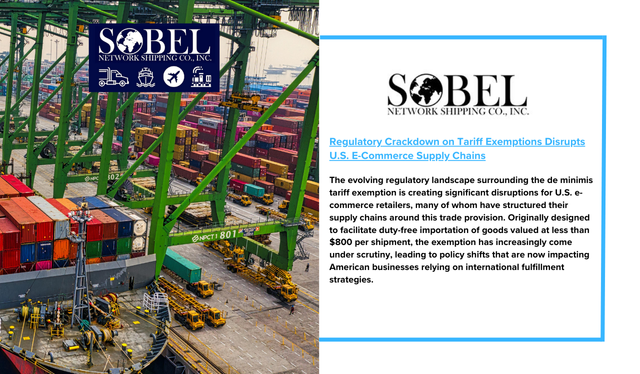The evolving regulatory landscape surrounding the de minimis tariff exemption is creating significant disruptions for U.S. e-commerce retailers, many of whom have structured their supply chains around this trade provision. Originally designed to facilitate duty-free importation of goods valued at less than $800 per shipment, the exemption has increasingly come under scrutiny, leading to policy shifts that are now impacting American businesses relying on international fulfillment strategies.
Increased Oversight and Uncertainty
U.S. regulators have intensified their focus on the de minimis provision, particularly in response to concerns about its use by foreign e-commerce giants. The dramatic increase in shipments utilizing this exemption—rising from 637 million in 2020 to 1.36 billion in 2024—has prompted calls for stricter enforcement. The federal government is now assessing the economic impact and potential risks associated with the provision, including concerns over counterfeit goods and illicit trade.
Recent developments in Mexico have further complicated matters for American businesses leveraging nearshore fulfillment strategies. New restrictions on duty exemptions for international orders and increased tariffs on select imports have disrupted established logistics networks. The shifting regulations have led many retailers to reconsider their fulfillment locations, causing delays in inventory movement and forcing strategic pivots.
E-Commerce Retailers Facing Disruptions
Companies that previously relied on Mexico as a key distribution hub are now grappling with supply chain bottlenecks. Some have already begun rerouting shipments to U.S.-based fulfillment centers, though this transition is proving costly and complex. The challenges extend beyond logistics, as retailers must now evaluate alternative sourcing and distribution methods to maintain efficiency and cost-effectiveness.
Third-party logistics providers are also experiencing an influx of inquiries from businesses seeking domestic warehousing solutions. However, transitioning apparel and consumer goods fulfillment from international locations to the U.S. poses logistical hurdles, particularly for brands managing diverse inventories and high order volumes.
Navigating an Uncertain Future
As regulatory policies continue to evolve, e-commerce retailers must remain agile in their supply chain strategies. The current uncertainty has left many in a wait-and-see mode, carefully monitoring policy developments while assessing contingency plans for future operations. Companies are now weighing whether to absorb higher costs by shifting fulfillment domestically or to explore alternative international logistics strategies.
While regulatory changes aim to curb exploitation of trade exemptions, their broad impact is being felt by a wide spectrum of businesses beyond the major foreign players they were initially intended to target. As new policies take shape, e-commerce retailers will need to adapt swiftly to mitigate disruptions and maintain seamless operations in an increasingly complex trade environment.


